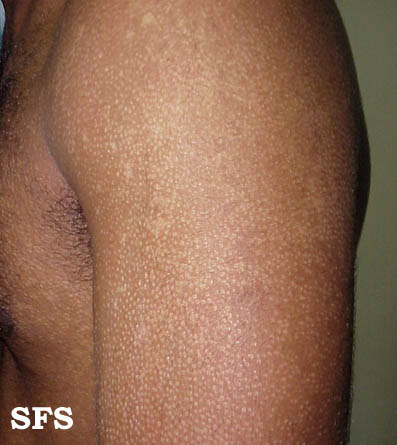The normal microbiota of the body are microorganisms which are co-existing with humans, more or less in a symbiotic mode of living. As stated in Human Microbiota: The Residential Microbes of Human Body and Their Potential Pathogenicity, they can be become pathogenic and attack the body if and when the conditions for peaceful co-existence are breached.
One of the parts of the body that contain microbiota, in fact the most prominent organ of the body, is the skin. It provides the largest surface area for growth of microorganisms, and coupled with its direct exposure to the external environment, it contains perhaps, the largest varieties of microbiota in the body. Most microbes which colonize the skin are hardy, tough microbes, and this is due to the many factors which are antagonistic to the presence of living organisms on the skin.
First, due to the periodic drying experienced on the skin and the accompanying lack of moisture, many resident microbiota of the skin are usually located on areas of the skin with at least enough moisture to support their growth. These areas include the scalp, ears, genitourinary and anal areas, perineum, and palms. Secondly, the skin produces sweat which is high in concentration of sodium chloride (salt) and lysozyme, two substances which are highly inhibitory to some microorganisms. Thirdly, the skin is slightly acidic with a pH between 4.0 – 6.0, produced by the resident staphylococci and secretions from skin oil and sweat glands.
Apart from these innate antimicrobial properties of the skin, the activities of the normal resident microbiota are also antagonistic to colonization by external organisms. To discuss these ways, one has to examine the most prominent microorganisms which colonised the skin.
Staphylococcus epidermidis: Generally, the species of Staphylococcus are common on the skin, and the most prominent among them is S. epidermiidis. These organisms feed on secretions from the oil and sweat glands present on the skin, providing water, amino acids, urea, electrolytes, and specific fatty acids for their growth. They are aerobic in nature, that is, they prefer surfaces which are well aerated. Together with other gram-positive microorganisms, they are sensitive to lysozyme, but tolerant to the salt produced on the skin. Although they have little virulence, they can attack the human body if the appropriate conditions are provided. They prevent colonization by other microbes by competing for nutrients with them, and producing antimicrobial substances against other resident gram positive microbiota like Propionibacterium acnes.
Propionibacterium acnes: Arguably, this is the organisms with the largest population on the human skin. They belong to the a group of microorganisms called the diphtheroids, of which another less commonly found microbes, Corynebacterium diphteria is among. These bacteria feed on secretions from the oil glands, hence they are found in large numbers in oily, anaerobic (non-aerated) areas of the skin like the face, upper chest and back, incidentally areas where acne commonly develops. They utilize these oily secretions to produce substances which are inhibitory against gram-negative bacteria and some fungi, but which are also associated with a strong body odor. Many body deodorants contain substances which can act against these microbes and reduce their populations, but which can however, pave way for the proliferation of virulent, resident and non-resident bacteria, especially of gram negative nature, which can cause infections. Their well-known association with acne, from which their name is derived, through feeding on sebum, a fluid secreted by the oil glands, is further discussed later.
Malassezia spp: These microorganisms are fungi, unlike the first two which are bacteria, and they are lipophilic (oil-requiring) yeasts which also live on the skin of normal humans universally. Like all fungi, they are resistant to the acid being produced on the skin, and because of their filamentous nature, they can survive extremely dry skin surfaces. They are generally harmless, but in some people can cause skin conditions referred to as tinea versicolour, a common skin diseases that causes patchy scaliness, increasing pigmentation in light-skinned people and decreasing it in dark-skinned people. Factor(s) responsible for this disease is unknown unlike other skin diseases, since most people have the microorganisms on their skin. The organisms cause a form of severe rash with pus-filled pimples in AIDS patients, and may infect the internal organs of people receiving fat-containing intravenous feeding. The most common of these microbes is Malassezia furfur.




You have brought up a very fantastic points , regards for the post.
that’s why I bookmarked this page for get news feed with perfectly information in the next coming post ,